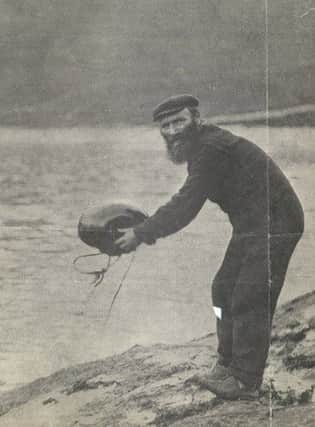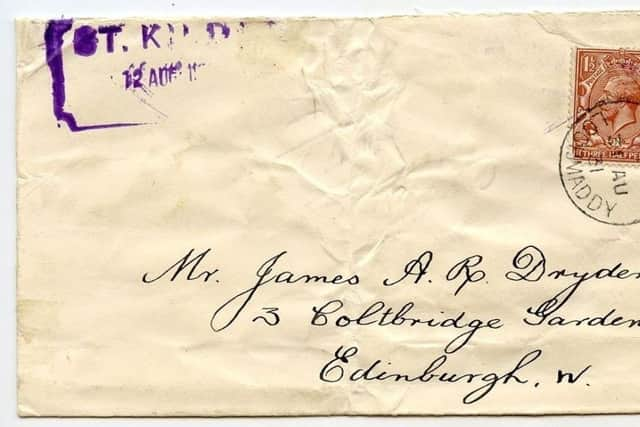£15,000 price tag for washed up St Kilda letter


The missive, written in 1899 by the visiting niece of the owner of St Kilda to her cousin in London, was sent in the mail boat – a wooden box or other waterproof receptacle attached to a homemade buoy – inside of which letters would be placed with a note attached saying “St Kilda mail”.
The letter, which was found in Haugesund, Norway and sent to London by staff at the British Consulate in the country, tells how the writer, Evelyn Heathcote, hopes it will enjoy a “better fate” than one she had sent a year earlier, which presumably did not reach its destination.
Advertisement
Hide AdAdvertisement
Hide AdBefore the evacuation of the islands in 1930, when all 36 inhabitants moved to the mainland, the St Kilda mail boat was the islanders’ main method of communication with the outside world.


The concept, which relied on hope that someone on the mainland would find the letters and put them into the postal system, was created in 1890 by a journalist who found himself stranded on the island and unable to communicate with the outside world.
In her letter of 28 June 1899, Heathcote, who visited the island twice with her brother, Norman – the author of a book about the history of the island – wrote: “I have just asked to have a St Kilda mail boat made, to be ready for the first NW wind, so I am getting some letters ready to go by it. I wonder if it will have a better fate than my last year’s venture. I hope so!”
According to postmarks on the envelope, it was eventually delivered to London four months later on 13 October, when the recipient had to pay five old pence in postage due.
Robert Hepworth, owner of Scotia Philately, who bought the letter from a collector, said: “This is a very rare item and probably one of the most important items to emanate from St Kilda. The St Kilda mail boat has a very romantic history. The inhabitants could hardly get mail to and from the islands in the winter months, so they created this carved out cylinder and used a sheep’s bladder as a float.”


He added: “It wasn’t exactly email and it wasn’t reliable. There are very few letters that actually are survivors because most of them sank without trace. I believe there are a few St Kilda letters in museums, but as far as I know, there are no others in private collections.”
A second St Kilda envelope in the same collection, sent by the island’s last postmaster, Neil Ferguson, in 1931, is also up for sale for £975. The envelope, which bears the message “Finder Please Post”, was discovered by a lobster fisherman at Rona Island by Lochmaddy and posted on to Edinburgh 19 days later.
After the evacuation of the last islanders, Ferguson returned during the summer, employed as a guardian of St Kilda by the owner, Sir Reginald MacLeod of MacLeod. MacLeod sold it to Lord Dumfries, who later became the 5th Marquess of Bute and it later fell into the hands of the National Trust of Scotland, which still manages it today.
Advertisement
Hide AdAdvertisement
Hide AdBy the early 1900s, the population of St Kilda had plummeted since its peak of 180 in the early 1800s, as islanders began to seek modern alternatives to the hard way of life they had been used to.
It has been reported that by the time of the evacuation there were only five surnames left in St Kilda, while two- thirds of the population were called Gillies or MacKinnon.
A Royal Mail spokeswoman said: “This is an interesting piece of postal history and highlights the lengths people and Royal Mail went to in days gone by to deliver the post.”